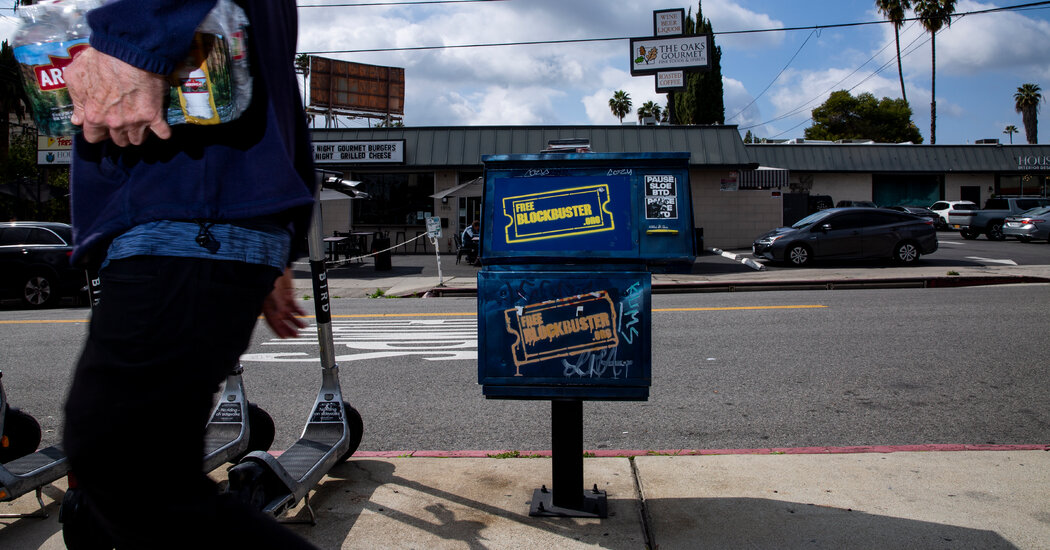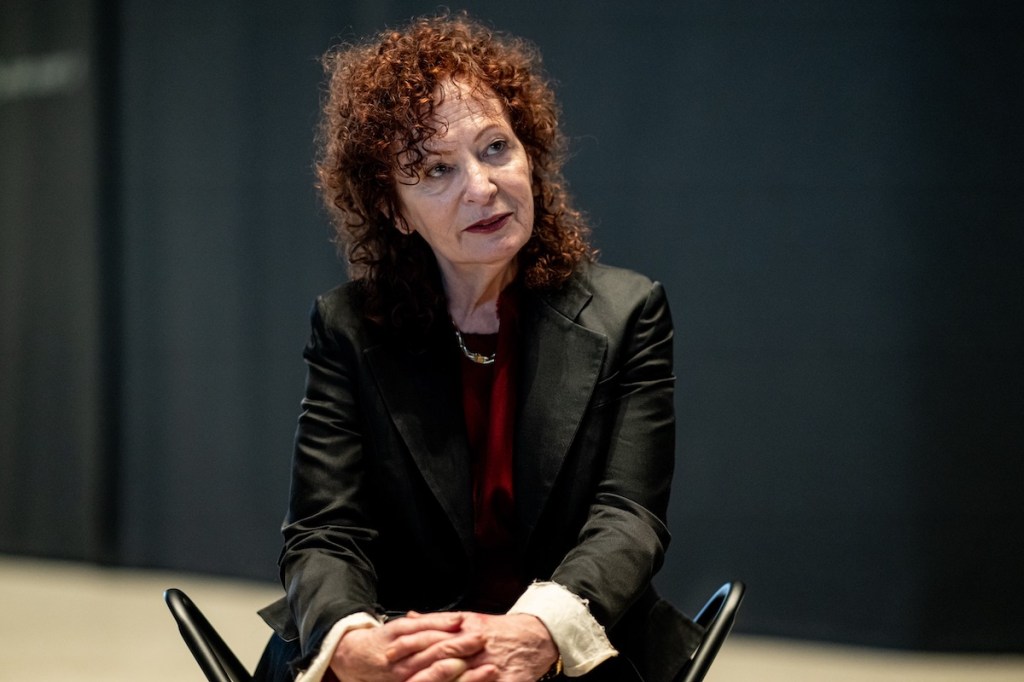Streaming services have transformed the way we view film and television, leaving us isolated on our couches, subject to the suggestions of an algorithm. But a small group of film buffs with a fondness for physical media are hoping to lure people back into the real world — one abandoned newspaper box at a time.
The Free Blockbuster project began in 2019, when Brian Morrison, a film and television producer in Los Angeles, and a former Blockbuster employee, painted the company’s blue-and-yellow logo onto an old box and filled it with DVDs. For many, the brand evokes memories of the trip to the video store with friends or family to browse the shelves and to pick up a film and a bag of popcorn.
“There’s a nostalgia attached to it that is resonant for a whole generation,” he said of the nearly obsolete Blockbuster chain, which operated thousands of video rental stores worldwide at its peak in the early 2000s. “It means something to a lot of people.”
The Free Blockbuster movement slowly gained traction and eventually, more than 200 other community boxes had opened from Louisiana to Canada and even Britain — though it is unclear how many remain operational.
“We are social animals; we want to go out into the world and engage with each other,” said Mr. Morrison, who keeps a lending library outside his home. He often refills it with DVDs and VHS tapes including TV series, horror movies and, on occasion, signed independent films, and said that it had encouraged interaction with his neighbors.
Andrew Kevin Walker, a Los Angeles-based screenwriter, said he had visited secondhand stores especially to seek out films to leave in the boxes — including two sealed James Bond box sets and a copy of “Cobra,” a 1986 film written by Sylvester Stallone. “It’s an opportunity for people to really share their love of cinema, whether it be their favorite guilty pleasure, or their favorite movie of all time,” he said.
Viewers with streaming fatigue say they are tired of chasing content that moves around an ever-expanding array of platforms or even disappears altogether, and some long for the physical media that was dominant until streaming took over.
“I think it’s great that folks are doing this — keeping the spirit of DVDs alive, circulating film in and exchanging them,” said Joe Pichirallo, a film producer and professor at New York University.
Shortly after Free Blockbuster was launched, a lawyer for DISH Network, which now owns the Blockbuster brand, sent Mr. Morrison a letter asking he stop using the company’s logo and name.
A spokeswoman for DISH did not respond to questions about the letter, but said in an email that the company was “aware” of the Free Blockbuster initiative. “DISH continues to explore and evaluate different opportunities that would best fit the iconic brand,” she said.
Blockbuster opened in Dallas in 1985 and by 2004 had grown to more than 9,000 stores around the world. In 2000, the company turned down an offer to buy Netflix, now worth about $265 billion, for $50 million.
Last year, Netflix ended its DVD service, and Best Buy recently announced it would stop selling discs. Physical media can still be borrowed from most public libraries.
“Consumers have found it much more convenient to watch something where, when and whenever they want,” Professor Pichirallo said.
The award-winning filmmaker Ava DuVernay called the Free Blockbuster movement vital and refreshing. “It is something that I very much embrace,” she said in a phone interview.
When it comes to art, “nothing beats holding it in your hand,” Ms. DuVernay said.
“That tactile intimacy of touch is something that sounds kind of flighty and unimportant, but touch is a sense,” she said. “It is a part of the experience of consuming and experiencing art.”
Ms. DuVernay lamented the loss of the director’s cuts and commentary that often came with DVDs but are now largely absent from films on streaming services. “That’s how I actually learned to make content,” she said. “I picked up a camera when I was 32, I listened to directors talk about their films to the picture.”
As Free Blockbusters have opened across the country, the last Blockbuster in Bend, Ore., continues to rent out films on DVD and Blu-ray. But Sandi Harding, who has managed the store for the past two decades, doesn’t see them in competition: The more people who engage with the Blockbuster brand and physical media the better, she said.
The store, which became the last in the world after franchises in Alaska and Australia closed their doors, now largely draws summer tourists, in addition to some regular customers, said Ms. Harding, noting that about 80 percent of the store’s income now comes from merchandise, and the remainder from film rentals. But it became increasingly challenging to scope out new releases on DVD and Blu-ray online, or at local department stores, she said.
“I don’t think it’ll ever go back to where it was before. But I think it’s kind of like vinyl records,” which have resurged, she said.
Alfonso Castillo, who co-founded a Free Blockbuster on Long Island with his son, said the lending library sees regular turnover with people both taking and dropping off movies, including older people. “My sense is that for them, it’s less of this cool novelty sort of ironic thing and more like, finally, there’s a place to get DVDs again,” he said.
At a Free Blockbuster in Sun Valley, Calif., customers have included an Amazon driver, passers-by on horseback and those who have ventured from afar after hearing of the lending library on social media, said Alyssa Kollgaard, 37, who opened the library outside her home earlier this year and stocks it with season-specific films, subversive books and free candy. She said she hopes it gives people “the experience of browsing and holding things in your hand.”
Farther south, in Hollywood, two other Free Blockbusters appeared empty on a recent Sunday, and the original, outside a grocery store in Los Feliz, has been removed by the city. But the one outside Mr. Morrison’s home in the quiet neighborhood of Los Feliz was filled with DVDs, including the film “Pay it Forward,” several seasons of the series “Burn Notice” and the 2000s sitcom “How I Met Your Mother.”
Two men in their 20s noticed the box as they walked past, but said they didn’t realize it had DVDs inside it. Neither watched films on physical media anymore, they said, preferring subscription services or YouTube. “It’s just kind of like on the nostalgia factor, for sure,” Sevag Halajian, 23, said of the box, recalling how as a child, he used to visit the video store with his friends.
“It was a fun time,” he added. “This has inspired me to go back to the old ‘Tom and Jerry’ DVDs I have and watch them.”










